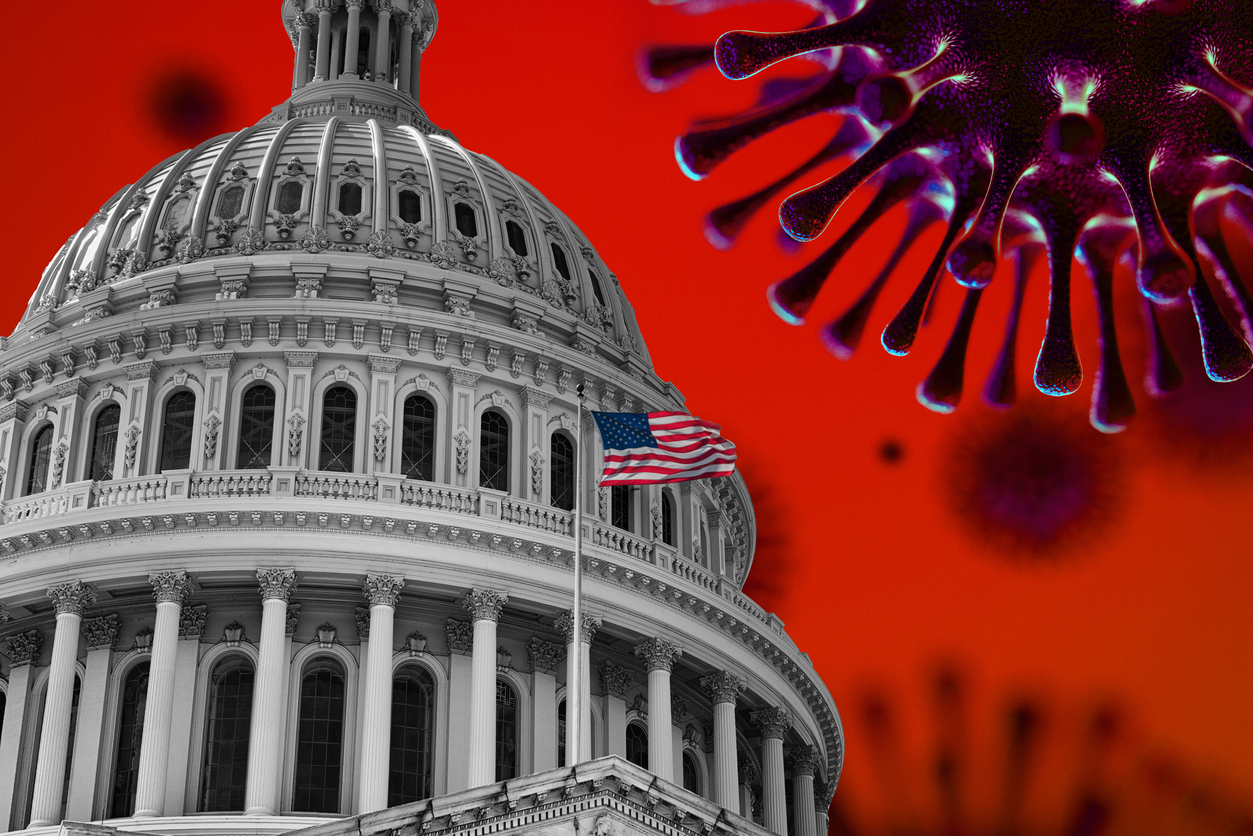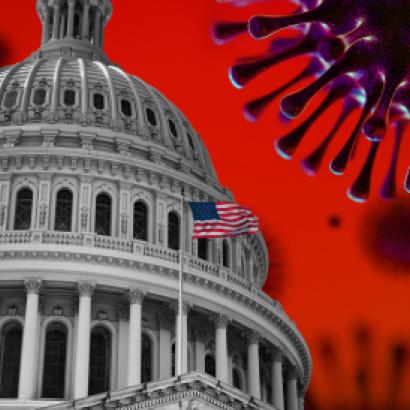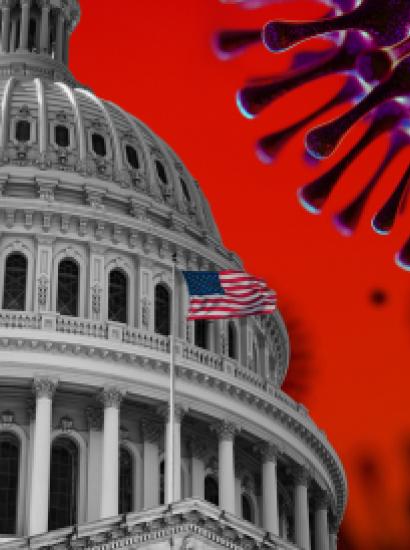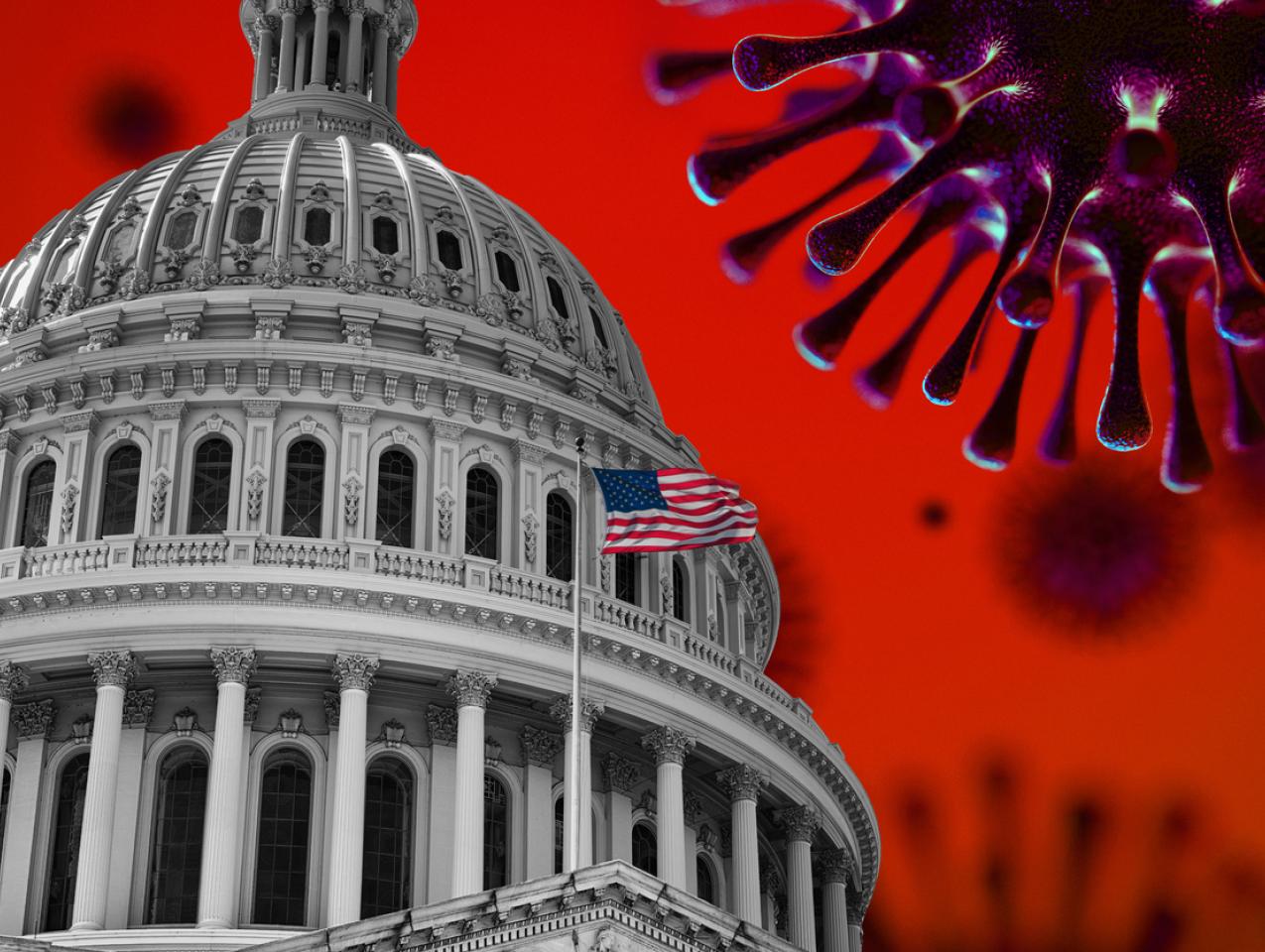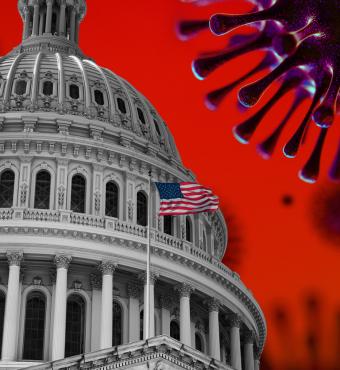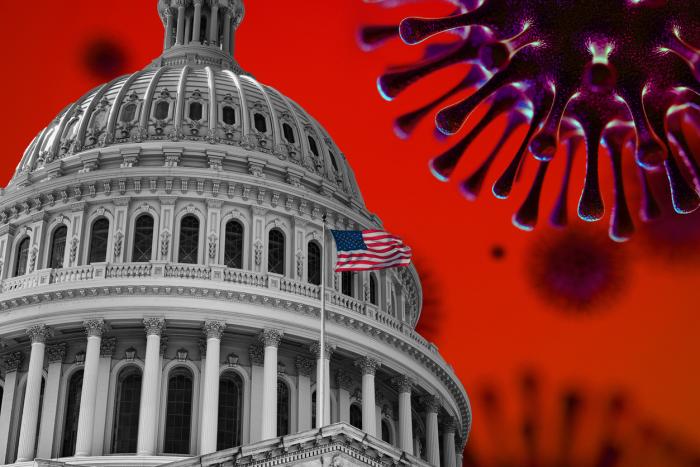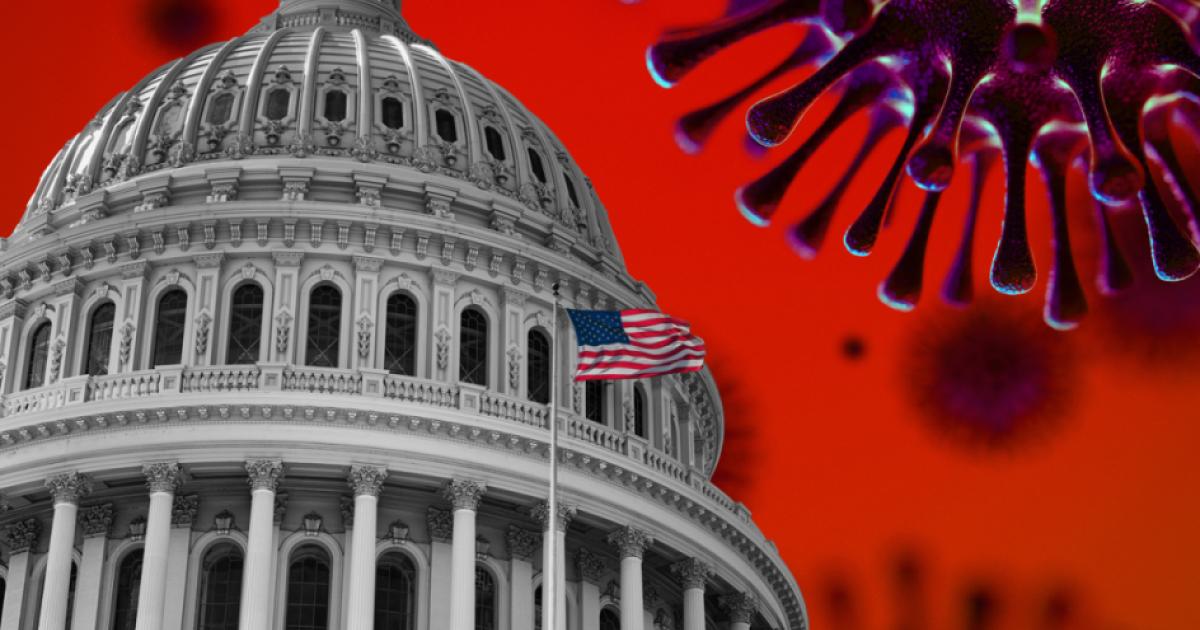- Federalism
- Revitalizing American Institutions
This essay is adapted from Who Governs? Emergency Powers in the Time of COVID (Hoover Institution Press, 2023).
No large-scale society operates under unanimity rules. Consequently, in real world democracies, some interests win and some lose in normal policy making. But at a minimum, democracy demands that all significant interests have a chance to be heard—to have a seat at the table. The experience of the COVID-19 pandemic raises questions about whether that has been the case.
A prima facie question concerns the fact that a single public health official in some cases can assume near-dictatorial powers. One public health official can partially shut down the economy or suspend civil liberties in his or her jurisdiction. If elected, like mayors or governors, a single decision maker would be less of a problem—elected officials represent and are accountable to the constituencies that elected them. But public health officials are selected, not elected, and they are selected on the basis of their expertise, not because they represent the community. Concentrating such power in the hands of a single unelected official raises an immediate concern about the absence of representation.
A second problem of representation that arises from the experience of the coronavirus pandemic is that the officials who promulgated emergency orders did not experience the costs of those orders. This is not a reference to the numerous reported cases in which public officials attended dinners, wedding receptions, and other social functions that were disallowed under existing regulations. Rather, no matter how stringent the policies that public health officials imposed, they continued to draw their salaries and accumulate their benefits. They suffered no personal cost from the shutdowns and other restrictions that damaged or destroyed the livelihoods of people who owned or worked in nonessential businesses. Probably their higher economic status allowed many of them to send their children to in-person schools more than was the case for the average citizen, or to engage paid help to make remote schooling easier. As a Harvard Medical School doctor dryly commented:
Lockdowns have protected the laptop class of young, low-risk journalists, scientists, teachers, politicians and lawyers, while throwing children, the working class, and high-risk older people under the bus.
Academic research documented the unequal economic and other costs associated with the pandemic. The unequal impact of lockdowns and similar restrictions possibly contributed to the notable partisan difference in support for such policies. A higher proportion of Democrats than Republicans are public sector workers, with millions employed in education, government, and the nonprofit sector, parts of the economy generally less subject to pay cuts and layoffs—not to mention bankruptcies—than private sector workers.
Former French prime minister Georges Clemenceau once said that “war is too important to be left to the generals.” Much the same sentiment applies to the decisions by public health officials in pandemics. In the early days of the COVID pandemic, economics and business commentators argued that the public health benefits of shutdowns should be weighed against the likely economic costs. Civil libertarians raised the same concerns about trade-offs between shutdowns and civil liberties. My impression is that few public health officials gave more than lip service to the recognition of such trade-offs. Instead, most discounted them.
Public health officials are chosen on the basis of expertise, not representativeness. Like all specialists, they exhibit a degree of tunnel vision, focusing on the variable their professional training emphasizes—public health, in this case—and discounting much else. Doctor Sara Cody, the Santa Clara County health officer, remarked in a June 2021 lecture, “It’s clear that public health officials have a singular focus and a duty and commitment to protect the public health; that’s why we’re in the field. I think it’s immensely more complicated for elected officials.” Depending on your point of view, Cody is identifying a feature or a bug.
Doctor Anthony Fauci, who by most accounts performed admirably throughout the crisis, provided a striking illustration of the specialist perspective after a testy exchange with Representative Jim Jordan (R-Ohio) at a congressional hearing in April 2021, where Jordan charged that pandemic guidelines “trampled” on Americans’ liberties. Fauci told CNN’s Dana Bash: “This has nothing to do with liberties, Dana. We're talking about the fact that 560,000 people in our country have died. We’re talking about [60,000] to 70,000 new infections per day. That’s the issue. This is a public health issue. It’s not a civil liberties issue” [my emphasis]. Probably most Americans would agree with Fauci that public health considerations often outweighed civil liberties infringements during the pandemic, but not that the latter are completely ignorable.
Public health officials were not alone in this regard. Some elected officials saw the issues raised by the pandemic similarly as one-sided as Fauci did. Democratic governors in blue states such as New York and California tended to issue more stringent restrictions than Republican governors in red states such as Florida and Texas did. New York Governor Andrew Cuomo famously commented that “if everything we do saves just one life, I’ll be happy.” No one really believes that, of course; if they did, they would lobby for five-mile-per-hour speed limits so almost no one would die in car accidents. As Doctor Scott Morrow, the San Mateo County health officer, commented on his profession’s focus on infection rates, “When you only look at one thing, you only see one thing.”
Regardless of whether emergency orders are issued by elected or appointed officials, their issuance and maintenance would have greater legitimacy if done by collective bodies more representative of the community, bodies that include health officers but also others—economists, business leaders, educators, psychologists, clergy, and politicians who would articulate other interests held by community members. Indeed, according to the Santa Clara County health officer, “This unilateral decision making is really a breathtaking departure from normal public health practice because normal public health practice is all about stakeholder engagement and shared decision making. . . . So this was quite different.” Perhaps after the initial response to the emergency there should be a greater emphasis on returning to the more normal public health practice where a “more holistic” approach is adopted.
In his remarks, Cuomo went on to comment that “no American is going to say accelerate the economy at the cost of human life. Because no American is going to say how much a life is worth.” Actually, of course, many Americans say just that virtually every day—personally and professionally. As Glenn Greenwald, a dissenting commentator on the political left, observes:
In virtually every realm of public policy, Americans embrace policies which they know will kill people, sometimes large numbers of people. They do so not because they are psychopaths but because they are rational: they assess that those deaths that will inevitably result from the policies they support are worth it in exchange for the benefits those policies provide. This rational cost-benefit analysis, even when not expressed in such explicit or crude terms, is foundational to public policy debates—except when it comes to COVID, where it has been bizarrely declared off-limits.
Program analysts evaluate the value of human lives when they do cost-benefit analyses of environmental, health and safety, and other regulations. Insurance companies and Medicare actuaries assign a value to human lives when they decide what drugs and procedures to cover. Courts decide how much lives are worth when they determine damages in lawsuits involving loss of lives. And speaking personally, as a reasonably healthy senior citizen, I may have some productive years left, but my life certainly is not worth anywhere near as much as the lives of my grandchildren, even less so if I had a serious illness or dementia. Treating all lives as equally valuable is a political decision, not a public health decision. In asserting that he would do anything to save one life, Cuomo was attempting to camouflage a political decision as a public health decision.
In responding to criticism that her department’s response to the pandemic was too heavily focused on the pandemic itself and not on the other economic and social harms that accompanied it, Cody commented that it was a “fair criticism” to ask, “Why weren’t we looking at health in a more holistic way?” She went on to say, in her 2021 lecture,
My challenge and the tension that I have felt over the last year and a half has been one, feeling constrained, like as far as an order, I should really just think about communicable disease and I also know that all of these economic social (sic) harms translate to health harms. And it’s like, I wished that I could take the economic and social harms and magically convert them to some health harm scale, right? And then compare trade-offs. But that little formula, it doesn’t exist, best I know.
Unfortunately, Cody is correct. Such a scale does not exist. And lacking such a scale, the comparison of trade-offs is a matter of judgment, and in a democratic society, that judgment is a political one. The essence of political decision making is weighing benefits and costs—on whom they accrue, how much, when, and where. The case of emergency powers is more complex and consequential than day-to-day political decision making, but it cannot escape this basic fact. As such, the use of emergency powers should be studied and evaluated in the context of democratic governance, not set over and above it.







